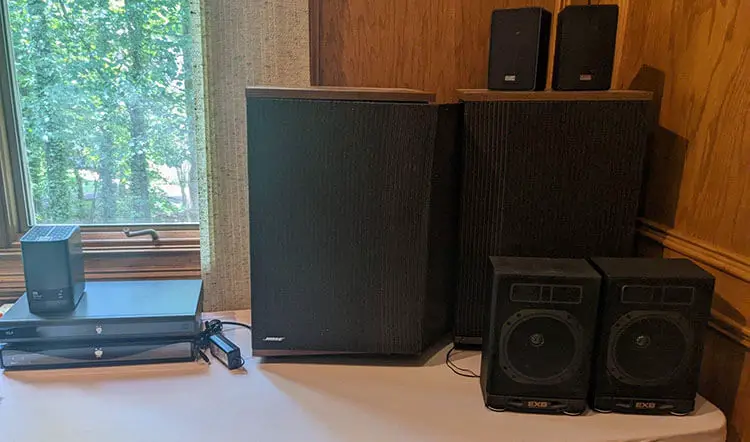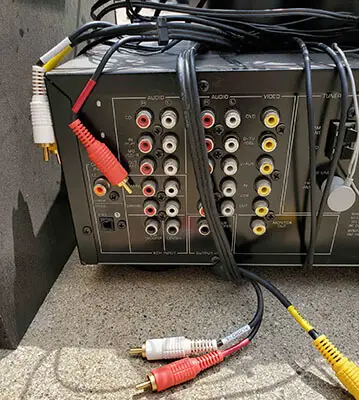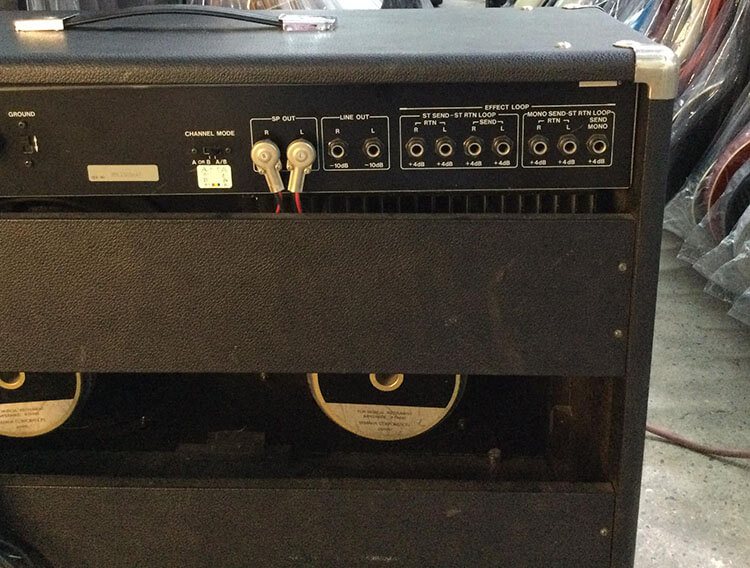Using an extra speaker is the easiest way to add a subwoofer to a 2 channel stereo. Some tricks are available in order to add them in a precise way. Though, using a subwoofer might not help to reduce extra noise. But sometimes it can be helpful.
Some key ideas will be given in order to get the desired result. At first, we will go through the requirements and then the way of connecting the subwoofer with the 2-channel stereo. So, we would like to greet you by jumping into the main article.
Set Up Required For Adding Subwoofer To 2 Channel Stereo

There are a few things to keep in mind when connecting a subwoofer player to a 2-channel stereo. The following important setups are listed in order to do this task flawlessly. For a clearer understanding, read the section.
- Check each system component to ensure there are no later incompatibilities.
- Make sure the subwoofer is a good fit for the space. These devices’ modulators need to be strong enough to handle any problems.
- Placement in the room is one of the most vital factors.
- Room temperature must be within the.
- Do not disregard any error messages that the music system displays.
- A stable internet connection along with a proper electric setup is very much needed.
- On the back of the TV, pay close attention to conventional inputs such as ports, jacks, and S-Video.
- Clean the 2 channels properly with great care.
Few Factors To Follow Before Adding a Subwoofer To 2 Channel Stereo
In this section, we would like to discuss some of the main features before adding subwoofers to the 2-channel stereo.
1. Focus On The Quality of The Subwoofer
Most subwoofers are worthless pieces of junk. There are two basic causes for this. The driver is the first. These are typically big (particularly larger than 10″), have flimsy cones, little travel, shoddy magnet designs, or are made of naturally ringy materials.
Tap the cone of a subwoofer to quickly determine whether it will produce overtones or tones that are above where they should be. If it sounds like a paper cup, you are likely hearing frequency overtones that are far higher than the bass the subwoofer would produce.
It must sound completely silent. Keep in mind that subs should only produce low bass, not the middle! If they produce these middle tones, your main speakers will be negatively colored.
2. Compare The Size Of The Subwoofer And The Room
This is due to the fact that the room itself, rather than the speakers, almost exclusively determines the bass quality. Subwoofers greatly worsen this problem. The quick answer is to select a small subwoofer for small rooms, a medium one for medium-sized rooms, a large one for large spaces, etc. Avoid attempting to fit a big sub in a tiny space.
The room modes will amplify the sub’s energy to such an extent that it will typically drastically reduce your bass output. The system is largely influenced by the environment of the room, not the speaker. Subwoofers greatly worsen this problem.
Additionally, utilizing a large subwoofer is overkill because compact subs are typically easier to construct precisel. Small rooms can’t typically produce extended bass notes. The frequency inaccuracies of a larger sub in a small room can otherwise damage a decent set of speakers.
3. Integration And Roll Off With The Main Speaker

You must dynamically determine whether you should lower or raise the sub-volume at each trial site because it is moved across the room in terms of frequency type and volume effect. The ideal method is to have someone else move the sub while you turn these dials.
Listen to the same song or frequency sweep again during each test. A bass gap between the sub and your speakers caused by a roll-off that is too low makes the sound unnaturally thundering but cold. A roll-off that is too high sounds bloated and clogged. Have someone move the sub as you turn these knobs.
4. Check The Pay Off
A subwoofer can help your system by addressing some of its omissions and commission flaws. The main result is a sound with increased authority, power, punch, and liveliness.
It is possible to significantly improve that illusive sense of “being there” or engagement. Ironically, you can actually enhance the definition of the soundstage and instrument arrangement if you get the subwoofer configuration right.
This partially results from clearing up bass mode issues to free up the lower midrange, but it also occurs as a result of how the human brain operates.
The absence of the entire soundscape makes it difficult for the brain to unwind and accept anything as genuine. However, when the missing bass is added, all the pieces “click” into place, and the level of plausibility is raised.
All genres of music can profit from this, but classical music fans will notice it the most.
5. Check All The Connections Properly
The channels are combined inside the subwoofer. Use a Y combiner adapter if your preamp has left and right outputs but your sub has only one.
These can be purchased for about $5. Last but not least, subwoofers like the RELs we sell have a specialized high-level input that connects to your amplifier’s speaker binding pins if it doesn’t have a subwoofer or preamp output.
This cable does not require any electricity from your amplifier; it merely piggybacks on your main speakers. In this manner, there is a sub for you regardless of your system.
These are the precautions you need to take before setting up your subwoofer for 2 channels stereo. Now we would like to discuss the setting up portion.
How To Integrate A Subwoofer Into Your 2-Channel System

In this section, we will talk about how to set up the subwoofer for a 2-channel stereo. All you need to do is to follow the steps. For any problem, reach us anytime without any further issues. So, the points are given below:
- From your amp, run a speaker cable to the sub, and then run additional speaker cables to your speakers. As a result, your main speakers will continue to get the majority of the power from the sub. Expensive subs have good crossovers you may use in this configuration.
- From your preamp or integrated, send a line-level signal (RCAs or XLRs) to the sub. If your preamp/integrated/receiver has a dedicated “subwoofer out,” you can use it to achieve this goal instead of utilizing a second pre-out, RCA splitters to divide an existing pre-out, or a second pre-out altogether.
- A dedicated crossover is an additional choice, although they can be pricey and difficult to use. It is usually preferable to leave this field to experts who have a highly expensive system to back up their expertise.
- SVS, HSU, REL, and the very low-end Adire (Rava for Rava SE) are all excellent options for a powered sub for a 2-channel music setup. We suggest REL Acoustics subwoofers for hi-fi music systems. This storied British business only manufactures subwoofers; they serve its sole purpose.
- For a sub, speed is everything. REL devotes a significant amount of effort and resources to creating driver cones that are both light and rigid. Most subs have large, heavy cones that produce powerful bass, but once they start moving, they are very difficult to stop.
- REL creates cones that can swiftly transport large volumes of air without flexing by using materials like aluminum and carbon fiber. So, use transparent fiber optics.
you’ve already covered the important points. It’s time for us to respond to some of the most typical questions now. This part will assist you in learning the crucial solutions that have not yet been effectively addressed.
Frequently Asked Questions
Can I Connect the Subwoofer To the Stereo?
The subwoofer can be connected using an additional set of speaker cables, as shown above, if you’re using it with a stereo receiver that doesn’t have a subwoofer output (which many stereo receivers do).
This only works if the subwoofer has speaker-level (speaker wire) connections, like the choices in our Best Budget Subwoofer guide.
Can A 2 Channel Amp Power A Sub?
Using two voice coils, certain passive subwoofers may simultaneously receive low frequencies from the left and right channels of the amplifier. So, the answer is assertive in this sense.
THE REAL HOOKUP IS AS FOLLOWS: INPUT jacks on the back of the passive sub are used to connect speaker wires carrying stereo audio from the two-channel amp.
So, you need to check the Amp first in order to set up a 2-channel. We recommend calling a good technician and solving the issue properly.
Conclusion
Connecting a subwoofer with 2 channels is always tricky when you are dealing with a device like a subwoofer. Throughout the whole article, we tried our best to state these tricks in an easier way. The precautions are also described properly. For any further queries feel free to reach us anytime without any hesitation.
